The results of the 2016 presidential election were unanticipated by many. One of the unanticipated consequences of Donald Trump’s victory is that the same party controls the House, Senate, and White House for the first time since 2010. During the 115th Congress, the Republican Party will have a majority of the seats in the House (239) and Senate (51), and of course, the Republican President-elect Donald Trump will occupy the White House.
I suspect that the prospect of unified Republican government is a shock for many on the left and many on the right as well. Unified government, when the same party has controlled both chambers of Congress and the presidency, has been relatively rare in the post-war era. In the 72 years from 1945 through 2016, the U.S. has had unified government for only 28 years, about 39 percent of the post-war era.[1] The years of Republican unified government were 1953-54 and 2003-2006, less than 10 percent of the post-war era. Needless to say, during the 115th Congress the Republican Party will be eager to pursue its agenda. Here, I consider what this opportunity, combined with the central role that white working class voters played in electing Trump, may mean for reauthorizing two laws designed to provide students with more post-secondary options: the Higher Education Act (HEA) and the Carol D. Perkins Vocational and Technical Act.
The Higher Education Act amid competition over white, working class votes
Let’s start with the Higher Education Act of 1965, which is overdue for reauthorization. The last rewrite was in 2008, and Congress has not taken any serious steps towards reauthorization in the past several years. But the 115th Congress may see some movement on this law, for two reasons.
First, there is bipartisan support for making college more accessible and affordable among political elites and among voters. Let’s start with elites. Lowering the cost of higher education is, of course, an issue that Clinton campaigned on relentlessly after Sanders brought the issue to the fore during the Democratic primary. Trump has expressed support for income-based loan repayment programs, signaling that he is also interested in making college more affordable.
And as for voters? There appears to be bipartisan support for policies that increase college affordability. A New America poll of likely voters, conducted in October 2016, shows that 91 percent of Democrats and 73 percent of Republicans agree that education beyond high school is necessary to securing a job that pays well. Further, a majority of respondents in both parties (86 percent of Democrats, 52 percent of Republicans) favor a plan that would guarantee students the chance to pursue a public 4-year degree without going into debt for tuition.
It is also worth considering whether Trump’s support from non-college-educated white voters may motivate his administration to make higher education more affordable. Here’s the logic. First, consider what Pew Research found in exit polls: “Trump’s margin among whites without a college degree is the largest among any candidate in exit polls since 1980. Two-thirds (67%) of non-college whites backed Trump, compared with just 28% who supported Clinton, resulting in a 39-point advantage for Trump among this group.”[2]
The point I want to make here is this: it seems quite plausible, as many have suggested, that many non-college-educated whites voted for Trump at least in part out of a sense of deep economic insecurity. The centrality of this constituency to the current Republican coalition may mean that the Trump administration, as well as Republicans in Congress, seeks to address the grievances of whites frustrated with their limited opportunities by making college more accessible and affordable.
At the same time, early rumblings from progressives such as Bernie Sanders suggest that at least some within the Democratic Party are gearing up to champion these voters’ concerns just as vigorously as Trump repeatedly promised he would. Bernie Sanders, of course, ran a hugely popular primary campaign that directly addressed the grievances of working class voters. Of the new Trump administration, he had this to say: “To the degree that Mr. Trump is serious about pursuing policies that improve the lives of working families in this country, I and other progressives are prepared to work with him.” Given this sentiment, and the soul-searching that is likely on the horizon for the Democratic Party in the wake of this historic upset, a reasonable hypothesis is that both major parties will compete in earnest for white, working class voters in the 2018 midterm elections. Reauthorizing the HEA and taking clear steps to making college more affordable may be the perfect vehicle for both parties to do so.
Potential legislative movement on Perkins, if Republicans authorize spending
What about the Perkins Career and Technical Education Act, last reauthorized in 2006? This past summer, the chances of reauthorization were looking good: the House passed a version of the law, but the Senate stalled when Sen. Lamar Alexander (R-Tenn.), chairman of the Senate Committee on Health, Education, Labor, and Pensions, refused to hold a hearing on the Senate bill. Sen. Alexander apparently delayed hearings on the bill, which enjoyed bipartisan support, following contentious disagreements with Secretary of Education John King over the Department of Education’s proposed ESSA regulations. With a Trump administration, however, that dispute is likely moot, as Trump looks to replace King.
There’s another reason to think that the Perkins Act may see some movement soon. The Act is designed to facilitate vocational training and workforce development, and given the economic insecurity that may have driven much of the support for Trump, as discussed above, it seems possible that providing an easier path to entering the workforce could occupy a relatively high place on the new administration’s agenda.
At the same time, reauthorization would include federal spending on education. It’s unclear whether vocational training is a high enough priority for Republicans in Congress to authorize these funds, particularly given the Trump transition team’s signaling that they’re likely to reduce the federal government’s role in education. That said, the House reauthorization of Perkins that passed this fall granted states additional flexibility to use federal funds, so it seems within the realm of possibility that this may be an initiative that congressional Republicans and the Trump administration would support.
Conclusion
While unified government offers the Republican Party a rare and powerful advantage to pursue their agenda during the 115th Congress, this insight alone tells us little about what education issues the Republican Party and the Trump administration are likely to prioritize. To parse what may be on the agenda, we need to consider electoral incentives. As the discussion above indicates, it seems as though Republicans and Democrats alike may be motivated to improve access to vocational training and higher education. The implication is that we may see bipartisan support for reauthorization of the HEA and the Perkins Act, two laws that may help lawmakers address the grievances of a powerful constituency: white working class voters. This is not to say that polices enacted under the HEA and the Perkins Act would solely benefit whites. But if we see more legislative movement than before on this issue, it may be attributable to the confluence of unified government and the recently demonstrated electoral power the white working class wields.
[1] Check out the House and Senate data for more details on partisan control of government.
[2] Let me be very clear: given Trump’s racially charged rhetoric and social science evidence on white racial identity, it is impossible and irresponsible to ignore the role that race and racism played in this election and continues to play in American civil and political society. This subject must be discussed at length, but it is outside the scope of this post.
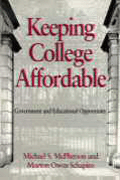
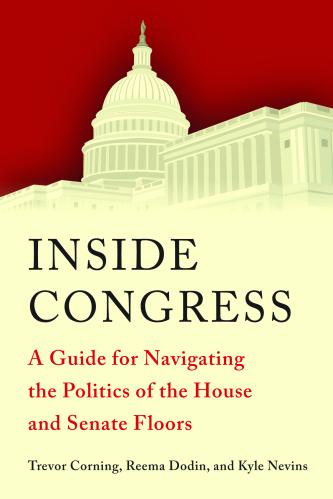

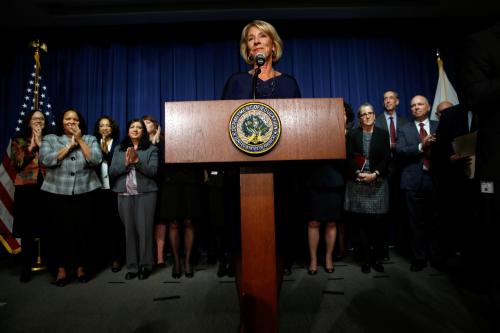
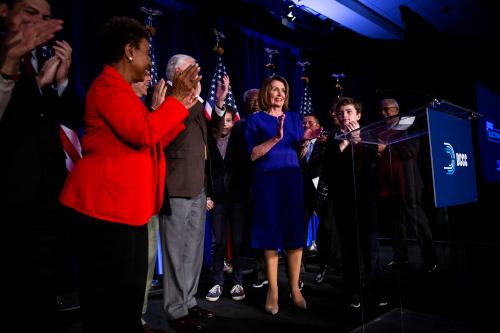
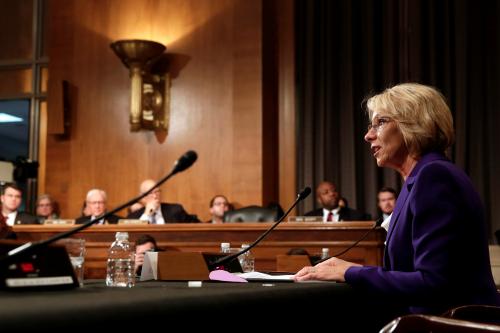




Commentary
What unified government and electoral politics might mean for education policy
November 14, 2016